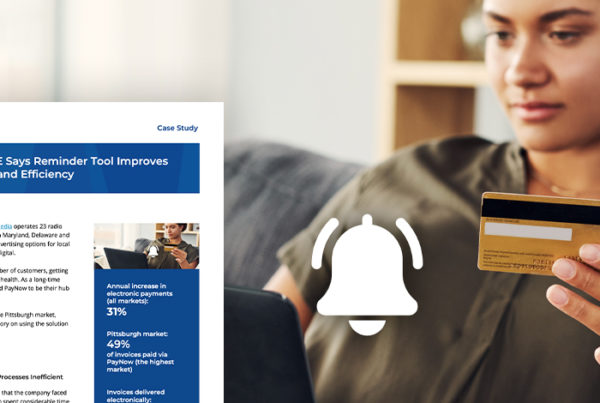Much of the conversation around political advertising for the 2022 midterms has been about broadcast. Local TV and radio will be the biggest winners, with BIA projecting ad revenue of over $8.4 billion for local. Digital will also play a role, with OTT/CTV leading the way.
As all the elections this year are in the state, county, city or local area, candidates, PACs (political action committees) and parties will be seeking multichannel campaigns. So, how do you make sure they buy linear and digital from you?
Let’s look through the numbers and trends. We’ll then provide some strategies for capturing political advertising revenue.
What the Numbers Say About Digital Political Advertising
We have a few sources of data to contribute to the conversation. First, Axios projects that digital will earn $1.3 billion, and CTV will have a more significant impact, at $1.5 billion.
Why the shift toward OTT/CTV?
First, cookies, which digital advertising depends upon, are phasing out. That means digital targeting, specifically the ability to serve ads to users based on tracked data, is not as valuable as before. Google also stopped allowing advertisers to micro-target voters based on political preferences.
Another reason for the fall of digital advertising is the crackdown by social media companies. The fallout from previous election years and the misuse of platforms to spread misinformation remain on voters’ minds. A Pew poll found that 54% of people don’t think social media companies should accept political ads. Another 77% find it unacceptable for these companies to use their online activities as targeting attributes for these ads.
Meta (Facebook) basically eliminated them by eliminating attribution targeting related to political affiliation, health, religion, race or ethnicity. Twitter banned political ads in 2019.
The loss of cookies and the pivot by social media leaves a wide opening for OTT/CTV.
Why OTT/CTV Campaigns Are Smart Choices for Political Ads
The loss of ad dollars from display, social media and search ads is now redistributed to the OTT/CTV bucket. So, why is it the most important digital channel?
Audiences Embrace OTT/CTV
It’s hard to find consumers who don’t stream. Nine out of every 10 people have a CTV device, and 98% subscribe to at least one OTT platform. It’s evident that the audience is there. This channel connects advertisers to every voting demographic, and it provides the chance to engage cord-cutters. That subset no longer watches OTA (over-the-air) TV.
These channels have the reach, but what about targeting?
Targeting Without Cookie Dependence
OTT/CTV targeting includes several areas that require cookies or IP addresses. Those areas consist of behaviors and interests, ZIP codes, state and DMA (designated market area). OTT can also use household demographics.
But OTT/CTV also has ways to target that are not dependent on third-party cookies. This type of targeting is contextual. In this approach, you place ads based on context. You can align ads with content that the target audience would most likely watch. This targeting isn’t cookie-based, so it’s another option that makes OTT/CTV attractive.
Channels Provide Better, High-Quality Content
Another advantage of using OTT/CTV is that it’s a space for quality content, compared to some display ad types. In this category, you cover all the bases — smartphones, tablets, desktops and TVs.
OTT plays over the content, and CTV looks like a typical TV OTA ad. Many candidates, PACs and political parties create impressive videos. This content also creates the opportunity to connect with users because they can’t skip the ads.
Using targeting, whether behavioral or contextual, and presenting a piece with high production value can drive engagement. If watching on mobile devices, users can click right on the ad. CTV requires the watcher to do more, so add a QR code for easy scanning. Using this channel with this type of content could improve advertiser CTRs (click-through rates).
Tips for Winning More Political OTT/CTV Ads
Now that you know why it’s such a booming channel, you can use what you learned to hook political advertisers. These best practices will support your efforts too.
- Illustrate that you can hit local audiences when you sell OTT/CTV, as you’ll be placing these based on behavior or contextual targets in your geographic area.
- Highlight that OTT/CTV is a cost-effective channel for any budget.
- Advise customers that you can provide them with digital and broadcast ad campaigns; they’ll only pay one vendor and receive consolidated reporting when using a cross-channel ad platform.
- Define the precision targeting capabilities of OTT/CTV for richer profiles using data (first- and third-party) to ensure audiences receive the most relevant messaging.
- Work with a third-party digital platform that has robust protections against ad fraud.
- Emphasize that OTT/CTV has great reach as well as targeting, making it a great hybrid of digital and linear TV.
OTT and CTV Are Strong Options for Local Political Ads
Local broadcast will earn the greatest haul from these election series, which is excellent news, but don’t forget about OTT/CTV as the digital aspect. You can offer both to local candidates, ensuring you win more of their budget dollars. For more on political advertising, download A Simple Guide to Dynamic Pricing and Political Advertising for Media Companies.
You can also request a demo of Marketron NXT, the cross-channel platform that allows you to manage linear and digital from one platform.







